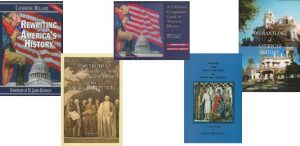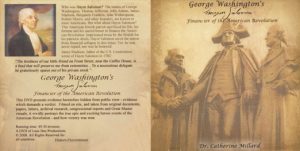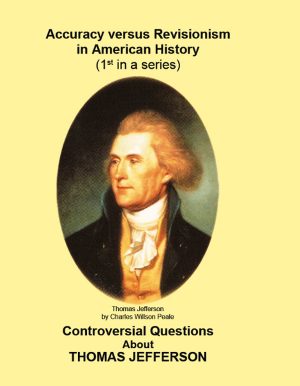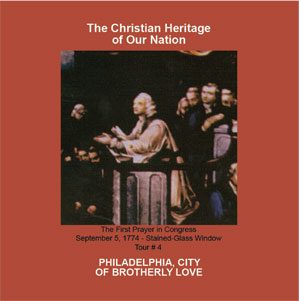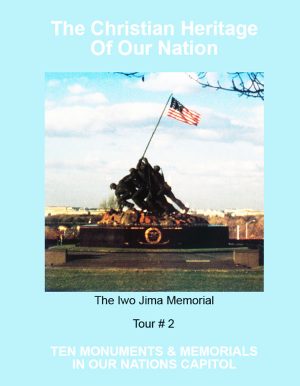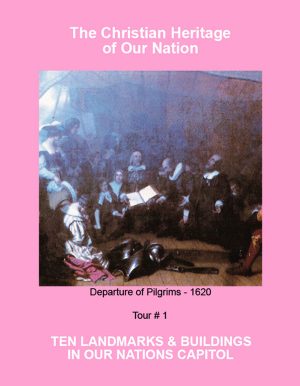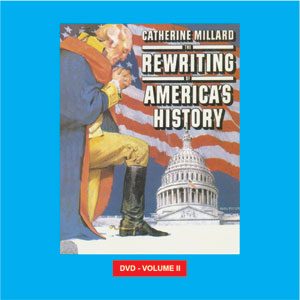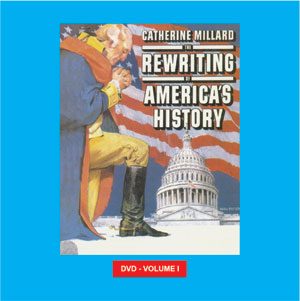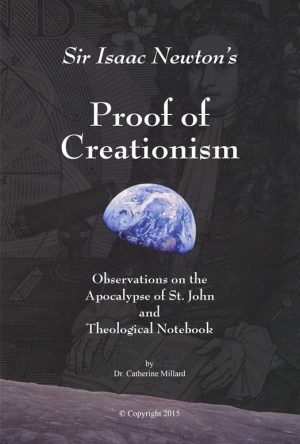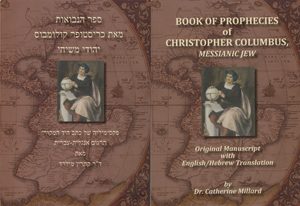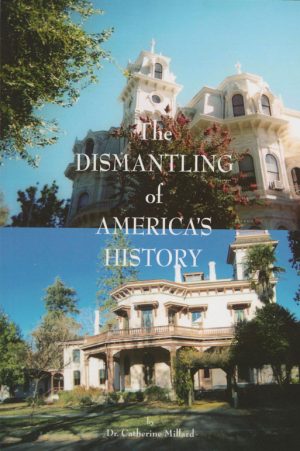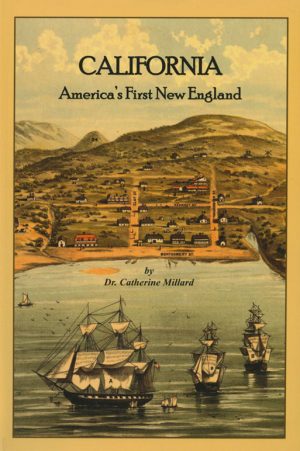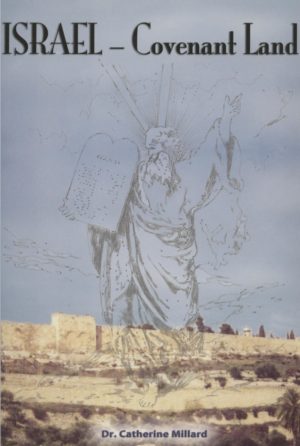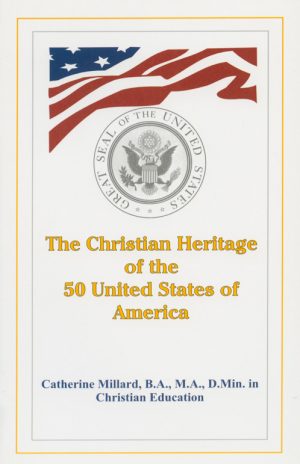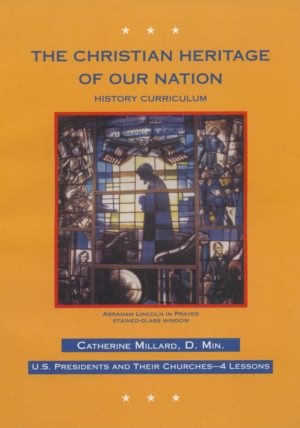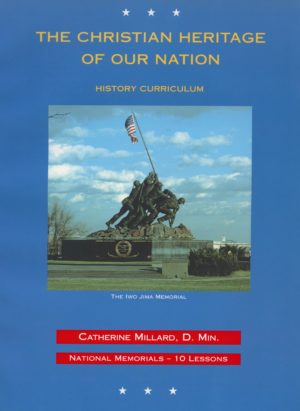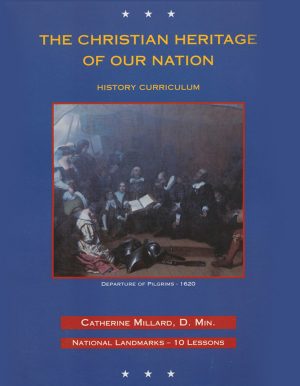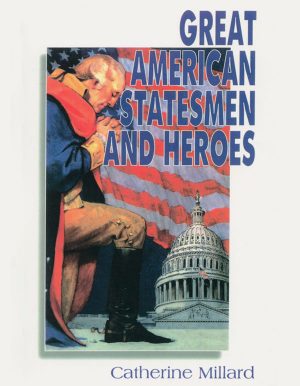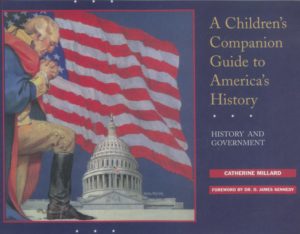Christ Church, established in 1695 and now called “the Nation’s Church,” was a focal point around which the American Revolution evolved. The founding fathers were intimately a part of the worship of Almighty God in this vibrant colonial parish church. This magnificent relic of the founding period of America’s history was designated a National Shrine in 1950.
It is interesting to note that, when the University of Pennsylvania was founded by Benjamin Franklin in 1740 as The Charity School, four-fifths of its first Board of Trustees were members of Christ Church.
The Second Continental Congress proposed a resolution calling for a public day of fasting, prayer and humiliation on July 20, 1775. Congress gathered at the State House (now Independence Hall) and proceeded as an entity to Christ Church where Reverend Jacob Duché preached a sermon entitled, “The American Vine.” Later in the day, members of Congress assembled to hear Thomas Coombe, the assistant minister, preach a sermon dedicated to Benjamin Franklin. Finally, in November of the same year, William White, the other assistant to Duché, preached a profound sermon entitled, “Submission to Civil Disobedience,” in which he counseled that if civil authority superceded the will of God, then resistance was sanctioned. As he stated, “The object of Government is human happiness.”
The famous sermon on “The Duty of Standing Fast in our Spiritual and Temporal Liberties” was preached in Christ Church July 7th, 1775, by Reverend Jacob Duché, M.A., first chaplain to Congress.
Reverend William White later became the second chaplain to Congress, under George Washington. Duché and White were directly connected with other families involved in making the momentous decision of the War for Independence. Duché was married to Francis Hopkinson’s sister, Elizabeth, Hopkinson being one of the signers of the Declaration of Independence. White was the brother-in-law of Robert Morris, financier of the Revolution and member of Christ Church. All three were educated at Benjamin Franklin’s College of Philadelphia.
The Reverend White succeeded Duché as rector in 1799. When the British army occupied Philadelphia, White journeyed to York, Pennsylvania, to serve as chaplain to the Continental Congress. He was not only a spiritual leader for the founding fathers but a friend and counselor to the patriotic men who guided the Revolution, drafted the Constitution and led the nation through these difficult years. William White was consecrated a bishop in 1787, and through his efforts the Anglican Church in America was reorganized at Christ Church as the Protestant Episcopal Church in America. After the departure of the British from Philadelphia, Chaplain White updated the liturgy, replacing the annoying petitions for His Majesty, the King of England, with prayers for Congress and other leaders in their nation’s new government.
A 17th-century English walnut baptismal font adorns Christ Church. It is the one in which William Penn was baptized in 1644, and was sent to Christ Church in 1697.
The great Americans who worshipped at Christ Church include: Benjamin Franklin, Alexander Hamilton, John Adams, Thomas Jefferson, Robert Morris, Betsy Ross, Francis Hopkinson, Benjamin Rush, M.D. and George Washington. Plaques mark the pews belonging to various families, including that of George Washington, Benjamin Franklin, Betsy Ross and Robert Morris. In 1861, three magnificent stained-glass windows were ordered from London and installed. They are the “Patriots’ Window,” the “First Prayer in Congress” or “Liberty Window,” and the “Organization of the American Church, Christ Church 1785” Window. The “Patriots’ Window” portrays the founding fathers worshipping God in their family pews with open Bibles. This window entitled “Christ Church Patriots 1790” signifies the foundational strength of America’s forefathers as they sought to put God first in their lives and to rely on Him to meet their every need in building a nation established on biblical truth.
Of further historic significance is the upper panel of the “Christ Church Patriots’ Window,” which shows America’s biblical heritage commencing in 1607 with the Jamestown settlers celebrating the Lord’s Supper upon their arrival in the New World.
The other famous window is the “Liberty Window.” When the first Congress assembled in Carpenters’ Hall on September 5, 1774, it was unanimously agreed upon that the session should be opened in prayer. For the Reverend Duché, it was not a mere formality as he led the group in prayer. The solemnity of the occasion is aptly captured as these – the greatest men in the colonies – cried out to God for guidance in the enormous task they faced.
Once again, in conformity with the national phenomenon taking place today, the “Patriots’ Window,” the “Liberty Window,” and the “Organization of the American Church, 1785” Window were permanently removed from Christ Church in the fall of 1986 and replaced with clear glass windows! When originally removed, it is claimed that the windows were being cleaned, but they have since been packed in storage crates, with no plans to reinstall them, whatsoever. It has also been claimed that these 150-year-old windows commemorating three crucial national events were removed to render the interior of the church “back to its original look” – i.e., clear, transparent glass. So they replaced the 19th century stained-glass windows with 20th-century glass in the 17th-century structure. What illogical reasoning!
While photographing the interior of Christ Church in May, 1988, Curator Bruce Gill told me that it had been his decision to remove these windows for “cleaning,.” Once removed, he stated that it was then decided never to reinstall them – a tremendous loss in terms of teaching America’s Christian heritage to succeeding generations of Americans, within the context of the most historic church in the nation: “the Nation’s Church.”
The Independence National Historic Park, Department of the Interior “Holy Experiment Tour” literature includes Christ Church on its itinerary. It states:
…Of special interest is the beautiful Palladian
window above the altar…
This window, the design of Italian Architect Andrei Palladio, has clear glass in stark contrast to the rich American founding period history taught by the Patriots’ and Liberty windows, of which no mention is made whatever.
In its January 23, 1989 report, the Department of the Interior, which has general jurisdiction over this church, states regarding these windows:
In order to preserve the 18th century church
the windows were replaced with 18th century
type glass. Again, church officials concurred
with this decision to authenticate the 18th
century integrity. 1
The “18th century type glass” referred to here is nothing more than clear, transparent window panes; certainly not 18th-century hand-blown glass, which was not preserved!
Christ Church, Philadelphia, stands as a monument and national shrine to those events which shook the world in 1776, and claims among its sons no less than seven signers of the Declaration of Independence, all buried in its grounds. The permanent removal of the visual re-enactment of these famous Christian events, in the form of “The Patriots,” “The First Prayer in Congress” or “Liberty,” and the “Organization of the American Church, Christ Church 1785” windows, must be grievous to the Holy Spirit. For it is bad enough when America’s secular and civic organizations refuse to acknowledge God’s hand in the founding of this nation, but how much greater the insult when done by the very church directly tied into that providential history!
In response to my letter requesting photographs of these priceless windows, Bruce Cooper Gill, Curator of Christ Church, wrote to me on June 10, 1988, as follows:
…Unfortunately, there were at one time photos
of these windows, but as they were sent out for
publication in the past they were never returned
(as promised).
Once the windows were gone, the commemorative postcards of these windows soon followed, and the interpretative tour was conformed to a format totally bereft of these cataclysmic Christian events of the nation’s founding period…
To learn more, click here.
____________________
Bibliography:
1Dunlop, Becky Norton. (Assistant Secretary for Fish and Wildlife and Parks). Report. United States Department of the Interior: January 24, 1989.
